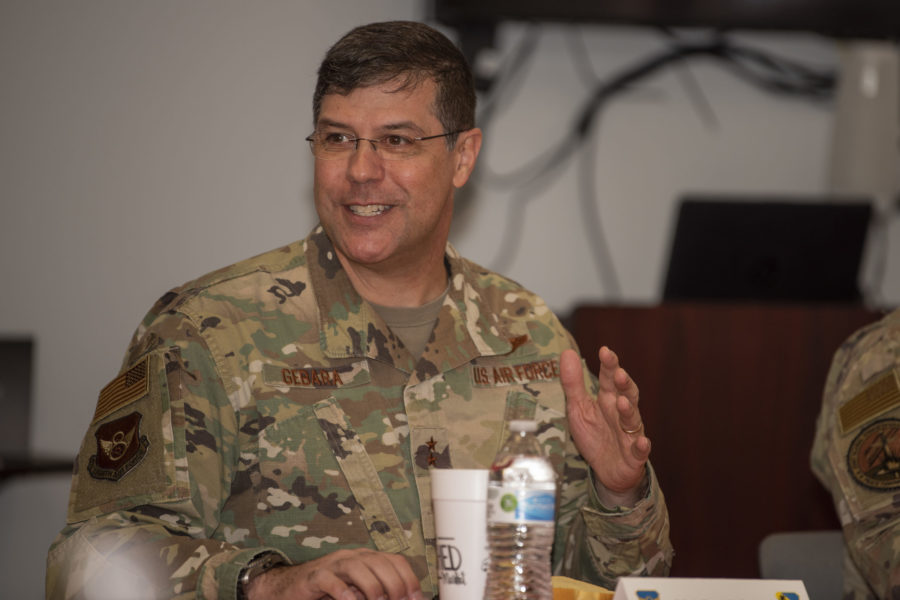The head of the Air Force’s bomber fleet has been tapped for a promotion to join the Air Staff and lead the service’s strategic deterrence efforts, the Pentagon announced Jan. 27.
If confirmed by the Senate, Maj. Gen. Andrew J. Gebara will pin on a third star and serve as deputy chief of staff of strategic deterrence and nuclear integration. He will succeed Lt. Gen. James C. Dawkins Jr.
Gebara currently serves as the head of the 8th Air Force and commander of the Joint-Global Strike Operations Center at Barksdale Air Force Base, La.
The 8th Air Force oversees the Air Force’s bomber and airborne nuclear command and control fleets, including the B-1, B-2, B-52, and E-4 aircraft.
The deputy chief of strategic deterrence and nuclear integration oversees the Air Force’s nuclear deterrence efforts, including its ICBM forces.
Before he took command of the 8th Air Force, Gebara commanded at the squadron and wing level and held positions in U.S. Central Command, U.S. Strategic Command, Headquarters Air Force, and the National Security Council. Prior to his move to the 8th Air Force in August 2021, he was director of strategic plans, programs, and requirements for Air Force Global Strike Command.
A command pilot with more than 3,800 flight hours, Gebara flew the B-2, B-52, and A-10. Unusually, he is a graduate of the U.S. Naval Academy and has served in four campaigns: operations Iraqi Freedom I, Allied Force, Joint Guard, and Enduring Freedom.
Once confirmed, Gebara will take over the Air Force’s nuclear enterprise in the midst of a massive modernization drive:
- The B-21 stealth bomber will soon make its first flight
- The LGM-35 Sentinel ICBM, formerly called the Ground Based Strategic Deterrent, is scheduled for its first missile test this year
- The Long-Range Stand Off weapon, a new nuclear missile, is in development
- New nuclear command, control, and communications systems are coming
- The MH-139 helicopter, used for transport and convoy of security forces around missile fields, is nearing a production decision.
Accompanying those modernization programs have been scores of construction and infrastructure projects—and in a recent Mitchell Institute webinar, Dawkins said those projects are his most pressing concern.
“Believe it or not, what I worry about most, more than anything right now—more than technology—is concrete and rebar, reinforcement steel that goes in the concrete to build the 650 construction projects that we have, not just in the missile fields but across the nuclear enterprise,” Dawkins said. “It has to be built in the next 12 years in 13 states.”
